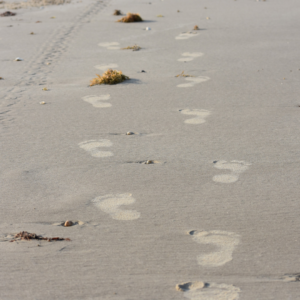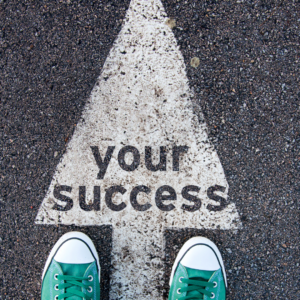Have you ever involved in an activity you are fully absorbed in and have an energized focus and in-depth engagement in it, and enjoy the whole process? If yes, then recall that activity because that is the actually activity that reflects what you are naturally inclined to do or what is your instinctive advantage.
Instinctive Advantage is your continuously developing traits, characteristics, and inclinations, that have become imprinted in your core and from which ease of your greatest abilities can emerge. Executing your instinctive advantage is like where you know this is what you were designed to do and you love the way it makes you feel. Being able to identify, understand and consciously use it can create a leap frog effect in your ability to be able to multiple your abilities.
So, is there any way to recognize and leverage one’s instinctive advantage?
I was able to identify my IA several years back by simply paying attention to what I naturally have a tendency to do – ‘Consciously Observing Everything’, you too can by undertaking these 5 key activities:
1. Identify what your natural tendencies are:
Identifying your natural tendencies is more difficult than it seems because what a person is  good at isn’t necessarily their IA but rather potentially a by-product of their IA. For example, my background is in process design and business development but this represents only a small part of my IA. The reason for this is because my ability to be able to map processes is simply a surface ability that I practice at work while my IA is an underlying and often unconsciously practiced ability that I often leverage at work.
good at isn’t necessarily their IA but rather potentially a by-product of their IA. For example, my background is in process design and business development but this represents only a small part of my IA. The reason for this is because my ability to be able to map processes is simply a surface ability that I practice at work while my IA is an underlying and often unconsciously practiced ability that I often leverage at work.
- IA has translated to me being able to develop innovations or rather to be an Innovator. This, I define as a process where I take a series of ideas and connect them with a series of processes to create what I call “Change Ideas”. As mentioned, I do this through a process I call ‘Connective Assemblance’. This has been a skill I have had for over 30 years, and it grows stronger as time passes and as experiences grow.
- When you work to identify your natural tendencies, focus first on what you truly like doing, not the result but the process. If you love painting, ask yourself why and what part of the activity brings you value – Is it the way by which you experience the colors?
What about if you love the practice of law, ask yourself why. Is it the crafting of the arguments that add value – or perhaps your control of the way the evidence provides small clues? By combining the visual evidence as well as the verbalized statements and your ability to be able to connect them with past experiences, this is what can create a virtual-visual path that leads you to the correct conclusions on how the arguments should be crafted – or perhaps it’s how you have been able to learn to read vulnerabilities in your opponents’ faces. Clues that provide the information they never knew – you could see. What senses do you use? What Connective Senses bind your experiences? While in graduate school I had a law professor who was a third-generation lawyer. We met while I was studying for my MBA in Paris France. He was an American born Harvard law school graduate who had an incredible breadth of courtroom experience having even worked, among many other cases, on civil rights cases even involving the Black Panthers of the 60s which demonstrates his level of prominence in the legal space. During casual discussions, he often spoke of his families’ line of lawyers where the common practice around the kitchen table was to speak of case law and this was part of his early 10,000 hours of experience achieved even before attending college. By the time he enrolled in law school he was so fluent in the experience of the law that even at that point he was as experienced in the language of the law as the most accomplished English teacher in teaching English. Why? Because his experiences in the ideation of law was just as impactful in hardening his soft traits as Magic Johnson’s experience on the court. What are you naturally adapted to do based on your hard and soft traits and experiences?
2. Recognize the 5 senses and 2 connective senses you use when performing those natural tendencies:
How do you take in information? We all are designed to perceive stimuli through our senses but the way by which we understand the information we are receiving greatly depends on both our hard and soft wiring. Have you ever heard of a man named Daniel Kish? He lost his eyes due to cancer before he was 1 but before losing his eyes his brain could build 3-dimensional constructs of his everyday world. Even without sight, however, he was determined to experience all of the benefits of being a sighted person as his brain could conceive and his memory could perceive. How did he leverage his remaining visual imagery and driving desire to regain some of the benefits of sight? By Behaving Differently. He, therefore, set out to create a way and perhaps stumbled upon the same evolutionary process that dolphins have been following for millions of years – by Echo-sounding. It’s a recognized fact that nature abhors a vacuum and when the right amount of force is applied, it will create a way. With Daniel’s absence of sight, his brain was free from having to receive and process the sensory images sighted mammals normally receive, through his eyes. His brain, therefore, with increased available operating capacity, looked to fill the void sight by finding another way to see for survival. This translated to the rewiring of his sensory perception to remove sight as sensory perception and place all of its focus on hearing as the primary perception – the receipt of stimulus via hearing. That began by Daniel at an early age, making clicking sounds similar to that of a dolphin and what happened next was amazing. When he made these sounds, the clicking traveled through the air, forward within space. For sighted people, it would have ended there. For Daniel, however, and his increasingly sharpened hearing, he began to recognize a response to his clicks in the form of return clicks. It was the clicking sound that came bouncing off obstacles in front of him. His transformational moment was when he recognized this cause and effect connection and through focus and practice, he began to further develop that sense to the point where he can now build three-dimensional images of his environment.
the way by which we understand the information we are receiving greatly depends on both our hard and soft wiring. Have you ever heard of a man named Daniel Kish? He lost his eyes due to cancer before he was 1 but before losing his eyes his brain could build 3-dimensional constructs of his everyday world. Even without sight, however, he was determined to experience all of the benefits of being a sighted person as his brain could conceive and his memory could perceive. How did he leverage his remaining visual imagery and driving desire to regain some of the benefits of sight? By Behaving Differently. He, therefore, set out to create a way and perhaps stumbled upon the same evolutionary process that dolphins have been following for millions of years – by Echo-sounding. It’s a recognized fact that nature abhors a vacuum and when the right amount of force is applied, it will create a way. With Daniel’s absence of sight, his brain was free from having to receive and process the sensory images sighted mammals normally receive, through his eyes. His brain, therefore, with increased available operating capacity, looked to fill the void sight by finding another way to see for survival. This translated to the rewiring of his sensory perception to remove sight as sensory perception and place all of its focus on hearing as the primary perception – the receipt of stimulus via hearing. That began by Daniel at an early age, making clicking sounds similar to that of a dolphin and what happened next was amazing. When he made these sounds, the clicking traveled through the air, forward within space. For sighted people, it would have ended there. For Daniel, however, and his increasingly sharpened hearing, he began to recognize a response to his clicks in the form of return clicks. It was the clicking sound that came bouncing off obstacles in front of him. His transformational moment was when he recognized this cause and effect connection and through focus and practice, he began to further develop that sense to the point where he can now build three-dimensional images of his environment.
His drivers: Curiosity for the world and an inability to accept the a-typical.
Senses: Imagery through hearing
Connective Sense: Think, Believe, Adapt
His process:
- Produce a frequency of sound and project it forward into his environment.
- Listen intently for a response in the same wavelengths as the ones he sent forward.
His Instinctive Advantage: The ability to visually see his environment in 3 Dimensions through sound.
3. Capture the steps you follow when you execute your tendencies:
As mentioned, my process steps include Active Observance and Experimental Curiosity because curiosity has always driven my Instinctive Advantage. What are you inclined to do and what  steps do you follow when doing it? Using the practice of law again as an example, what senses do you use to take in the stimuli – information? Is it a visual process or perhaps a physical one where your movements are part of a process that flows without having to consider the next move? Capture the stimulus first because this is the medium from which the process begins. If you are a chef, your senses will undoubtedly include at a minimum, the 4 senses of sight, touch or texture, taste, and smell. What’s your process for projecting how seemingly contradictory taste can be combined to create completely new experiences? If you are new to cooking you most likely won’t have a clue but if you are inclined to feel, see, smell and taste projected combinations of potential ingredients then intuitively understanding what will and will not work is already an awareness your brain has established. After that, it’s just a matter of understanding the right proportions that are required to deliver the result. They start with color, use a standard base and from that base they layer flavors, produce new results. Their process of intuitively understanding the flavors combinations, however, maybe the steps that need to be captured because once captured, replication is easy, standardization becomes possible and the ability to scale is enabled.
steps do you follow when doing it? Using the practice of law again as an example, what senses do you use to take in the stimuli – information? Is it a visual process or perhaps a physical one where your movements are part of a process that flows without having to consider the next move? Capture the stimulus first because this is the medium from which the process begins. If you are a chef, your senses will undoubtedly include at a minimum, the 4 senses of sight, touch or texture, taste, and smell. What’s your process for projecting how seemingly contradictory taste can be combined to create completely new experiences? If you are new to cooking you most likely won’t have a clue but if you are inclined to feel, see, smell and taste projected combinations of potential ingredients then intuitively understanding what will and will not work is already an awareness your brain has established. After that, it’s just a matter of understanding the right proportions that are required to deliver the result. They start with color, use a standard base and from that base they layer flavors, produce new results. Their process of intuitively understanding the flavors combinations, however, maybe the steps that need to be captured because once captured, replication is easy, standardization becomes possible and the ability to scale is enabled.
While Daniel is rare, many other people also experience sound in similar but different ways, and this is especially true for people who have their 10,000 hours of working with music. Chromesthesia is a form of synesthesia where people experience sound visually, sometimes in shapes and colors. According to Marc-Jacques Mächlero of synesthesia.com, these perceptions or what’s called synesthetic experiences, are automatic and involuntary – instinctive for the possessor. If this is your inclination, then your process steps may be:
- I hear sound when I see……
- My perception translates this into degrees of variations and depths.
What’s next is to translate these inclinations into intentional mediums but it starts first with the understanding of the senses you instinctively and unconsciously use and the processes you use when going through your experiences.
4. Consider how those inclinations can be used to scale your successes:
This is an easy step for people who are truly tuned into their Instinctive Advantage but requires thought for those who have not yet made the connection. For Marc-Jacques who was hard  wired to be blessed at birth with Chromesthesia, his true instinctive advantage could be to be the ability to be able to paint the room with beautiful sound as similar as a Monet painting and the ability of the listeners to be able to experience the colors through sound. I can imagine listening with eyes closed, how the melodies come together but that is true if he’s a good painter.
wired to be blessed at birth with Chromesthesia, his true instinctive advantage could be to be the ability to be able to paint the room with beautiful sound as similar as a Monet painting and the ability of the listeners to be able to experience the colors through sound. I can imagine listening with eyes closed, how the melodies come together but that is true if he’s a good painter.
The process of tying these pieces together is very dependent on the senses you use and the inclinations you tend to follow. It can be therefore sometimes difficult to suggest how you identify that advantage. We all experience the world via the way we perceive the stimulus we receive and how we interpret them based on our past experiences. It’s therefore different for everyone. My inclinations are visual and the way by which I translate the stimuli I receive into a useable form is through my ability to Think Differently. This, however, requires that I dig deep into my repository of experiences or stored memories, to find complementary observations that when combined, can create powerful “Change Ideas”.
My IA is in being able to build ideas by connecting memories. Those memories in my case were gained through sight and sound and connected by Think and Adapt. If your gifts and greatest abilities are action-based, what are the other senses you use while practicing those gifts…and how transferable are the connections of the 5 basic senses and 2 connective senses, with the physical activities in which you engage? Connect the senses.
5. Work to consciously execute your inclinations to strengthen and hone your instinctive advantage:
For me and my instinctive advantage, I now consciously acknowledge and practice my inclinations. This means I no longer walk through space just occasionally capturing interesting sights. I now walk through with intent and focus on using all of my senses to listen even where  sound is not a prominent factor. I touch to feel the space to see whether the textures match the perception. I use my eyes to see the a-typical because that’s where the curious resides. I use my Think to ask the question “Why”. I recognized my inclination to observe consciously when I visited the Dominican Republic and visited the last known island residence of Christopher Columbus. It was a 2 story stone home built by the indigenous slave labor and featured 5 windows on the front of the second story home with all 5 windows having rounded edges at the top. The one thing that struck me as being a curious feature, however, was that out of the 5 windows that rather identical, 1 window, the furthest left window, was constructed with a small gothic arch inserted into the top of the 1 window. Why? I was never able to find the answer because it was most likely lost in time. In truth, I never really even tried to find the answer but the practice of trying to figure out the reason was just one natural example of an exercise that I purposefully practice because it hones my inclination of Active Observance. The way I truly and consciously recognized that this was a natural inclination was through observation of a friend who said to me “you’re really observant”. I had always been observant even before that date but I had never recognized the fact that this particular inclination was the key to my superpower and different from the vast majority of the population. It’s the gift of an innovator.
sound is not a prominent factor. I touch to feel the space to see whether the textures match the perception. I use my eyes to see the a-typical because that’s where the curious resides. I use my Think to ask the question “Why”. I recognized my inclination to observe consciously when I visited the Dominican Republic and visited the last known island residence of Christopher Columbus. It was a 2 story stone home built by the indigenous slave labor and featured 5 windows on the front of the second story home with all 5 windows having rounded edges at the top. The one thing that struck me as being a curious feature, however, was that out of the 5 windows that rather identical, 1 window, the furthest left window, was constructed with a small gothic arch inserted into the top of the 1 window. Why? I was never able to find the answer because it was most likely lost in time. In truth, I never really even tried to find the answer but the practice of trying to figure out the reason was just one natural example of an exercise that I purposefully practice because it hones my inclination of Active Observance. The way I truly and consciously recognized that this was a natural inclination was through observation of a friend who said to me “you’re really observant”. I had always been observant even before that date but I had never recognized the fact that this particular inclination was the key to my superpower and different from the vast majority of the population. It’s the gift of an innovator.
Follow us:
Facebook : Think Different Nation
Instagram : Think Different Nation
Twitter : @TDN_Podcast
